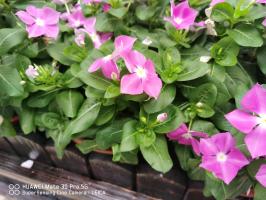Introduction
Chilled water plant is an energy project that aims to efficiently produce chilled water for various cooling applications in buildings and industries. It is a central system comprised of various components that work together to cool water and distribute it through a network of pipes to various cooling units. This article will discuss the benefits of chilled water plants, how they work, and their impact on energy consumption and cost.
How Chilled Water Plants Work
Chilled water plants work by removing heat from water and distributing the cooled water to various loads for space conditioning, process cooling, and other applications. The fundamental components include a chiller, pump, cooling tower, and piping network. The chiller is responsible for cooling the water, while the pump circulates the water through the system. The cooling tower dissipates heat from the water by evaporating some of it into the atmosphere. The hot water from the building or process is then circulated back to the chiller, where the cycle is repeated.
Benefits of Chilled Water Plants
One of the primary benefits of chilled water plants is their efficiency. By centralizing the cooling equipment, the system can achieve higher efficiencies than individual cooling units. Additionally, chilled water plants can be designed to use renewable energy sources, such as geothermal or solar energy, which can significantly reduce energy consumption and operating costs.
Another benefit of chilled water plants is their flexibility. They can be designed for various cooling loads and can operate at part-load conditions, which allows them to adjust their output to match the cooling demand. This can reduce energy waste and operating costs, especially during off-peak hours.
Lastly, the centralized operation of chilled water plants enables easier maintenance and expansion of the system. The system can be managed by a single operator, reducing the staffing requirement and lowering overall labor costs.
Impact of Chilled Water Plants on Energy Consumption and Cost
Chilled water plants have a significant impact on energy consumption and cost in buildings and industries. By using centralized cooling systems, the energy required for air conditioning and refrigeration can be reduced by up to 40% compared to individual cooling units. Additionally, by using efficient components, such as high-efficiency chillers and pumps, the energy consumption can be further reduced.
The use of renewable energy can also substantially reduce the energy consumption and costs associated with chilled water plants. The use of geothermal energy or solar energy can reduce the amount of fossil fuels used in traditional systems, reducing the greenhouse gas emissions and overall carbon footprint.
Lastly, the flexibility and improved maintenance of chilled waterplants can reduce costs associated with system downtime and repairs. By being able to adjust output, the system can be more efficient, and the ability to oversee operations by one operator lowers the required labor cost.
Conclusion
In conclusion, chilled water plants are an energy project that can significantly reduce energy consumption and costs associated with cooling in buildings and industries. The centralized operation of the system allows for increased efficiency, flexibility, and maintenance, resulting in lower operating costs and decreased environmental impact. As more companies and buildings look for ways to reduce energy consumption, chilled water plants present a valuable option for reducing their carbon footprint and saving money.

 how many times do yo...
how many times do yo... how many planted tre...
how many planted tre... how many pine trees ...
how many pine trees ... how many pecan trees...
how many pecan trees... how many plants comp...
how many plants comp... how many plants can ...
how many plants can ... how many plants and ...
how many plants and ... how many pepper plan...
how many pepper plan...































